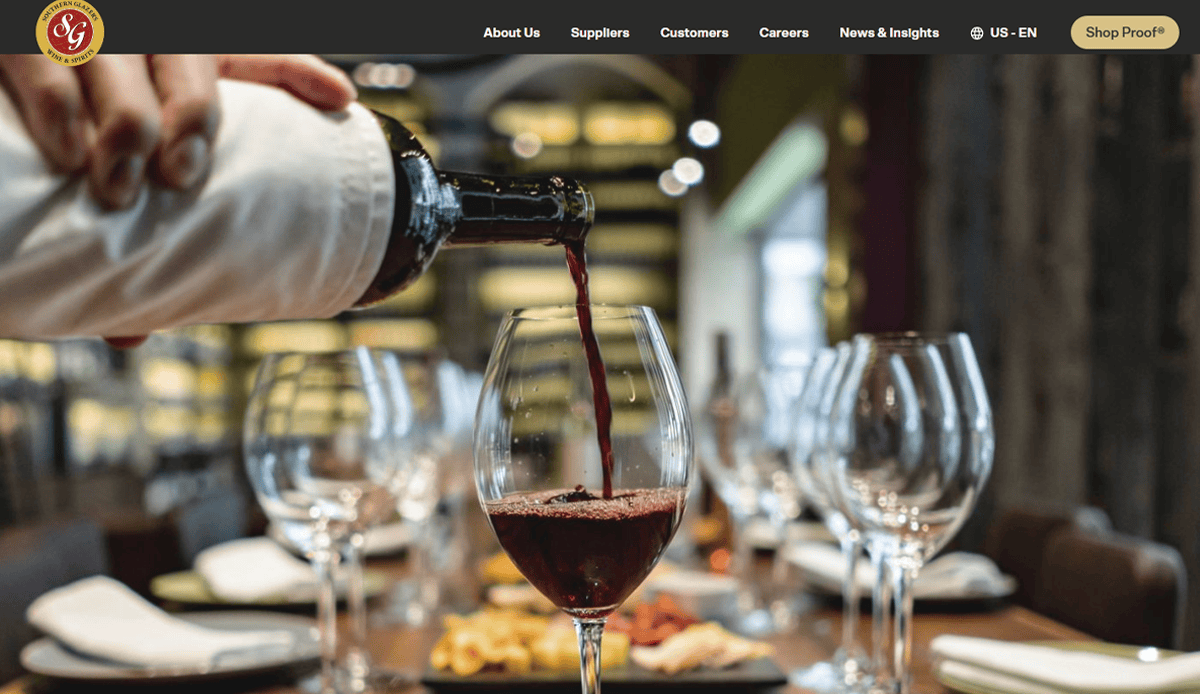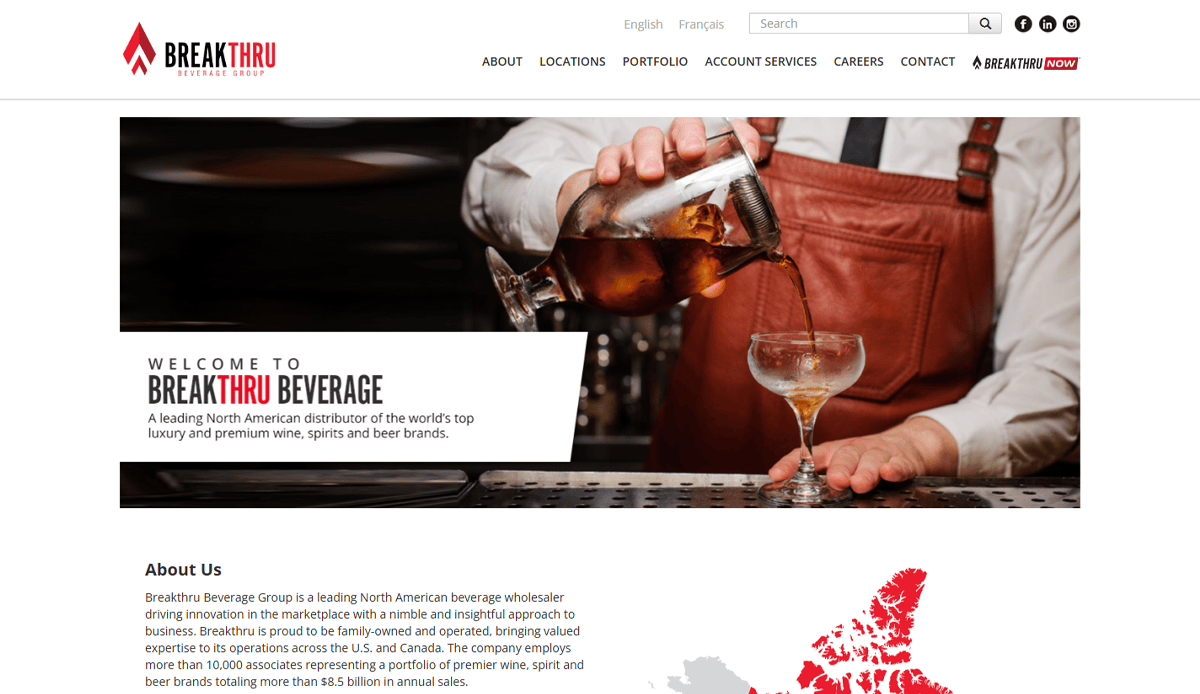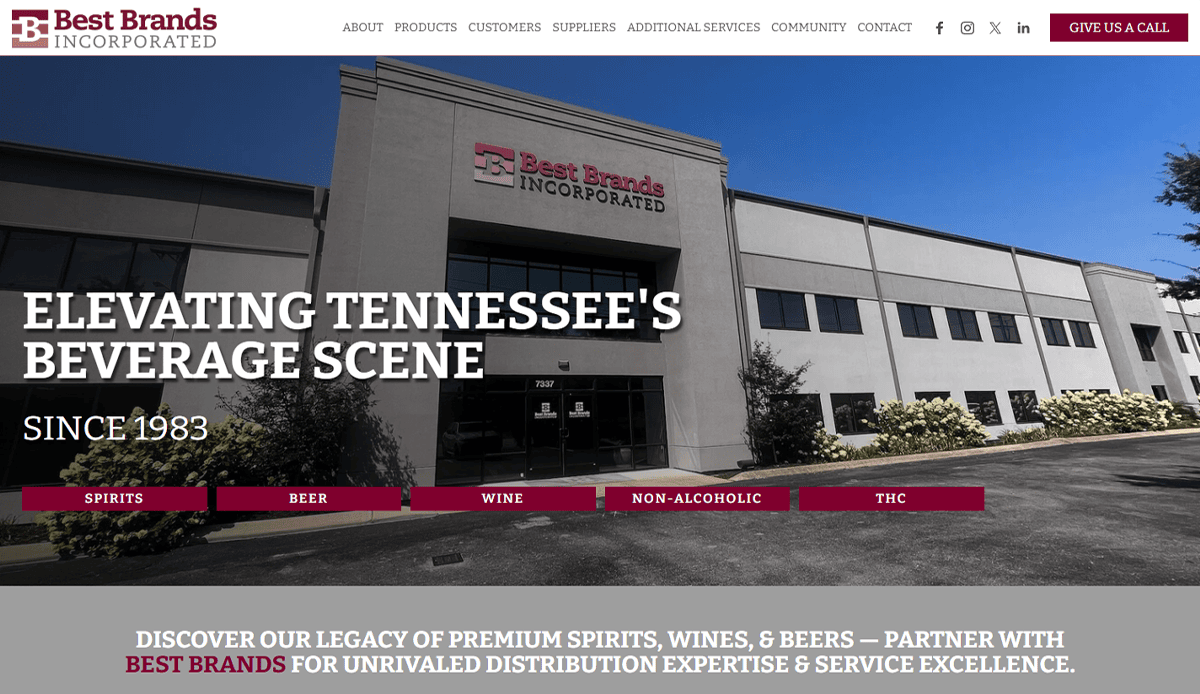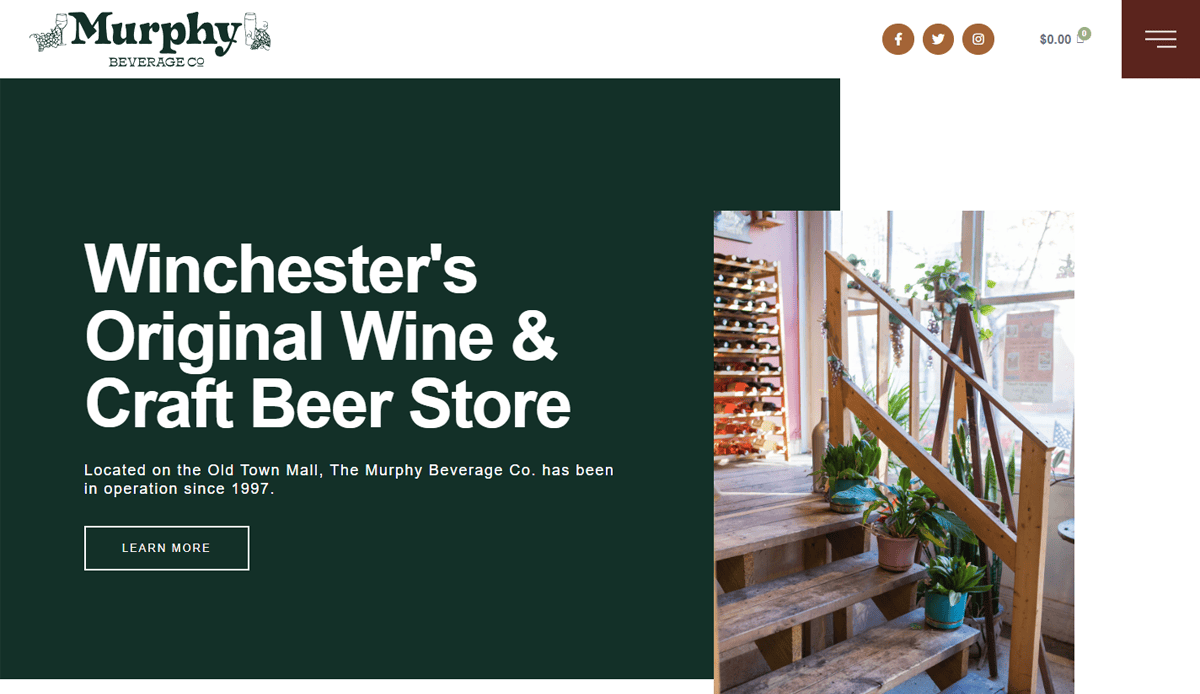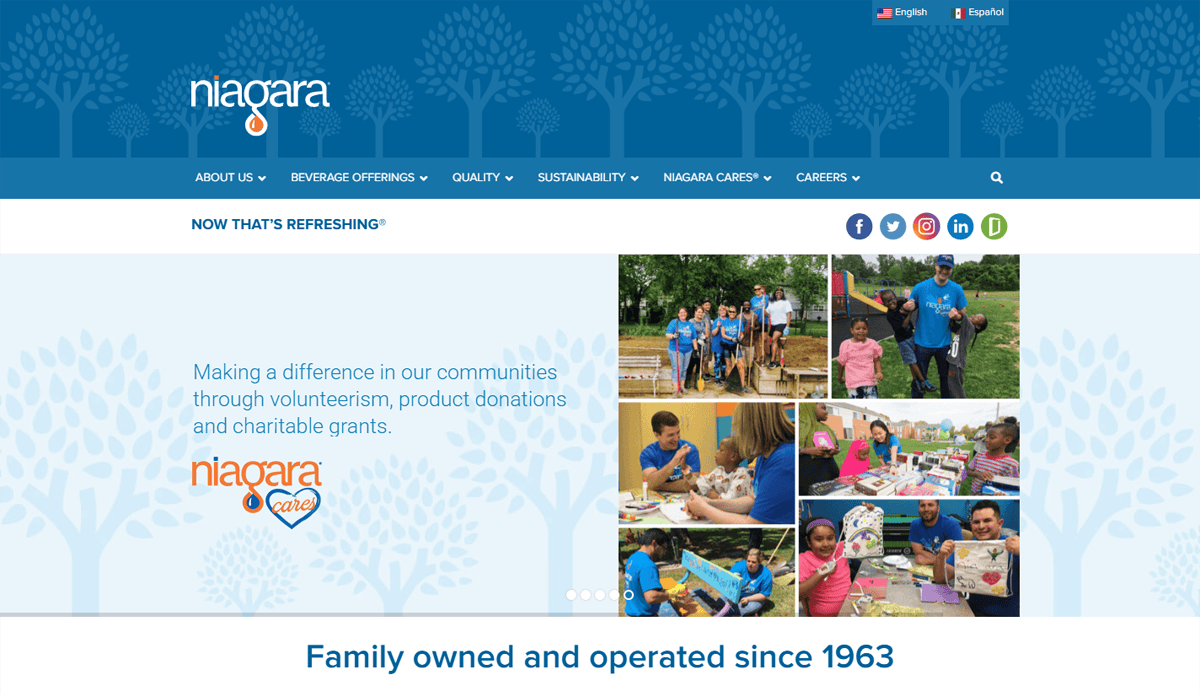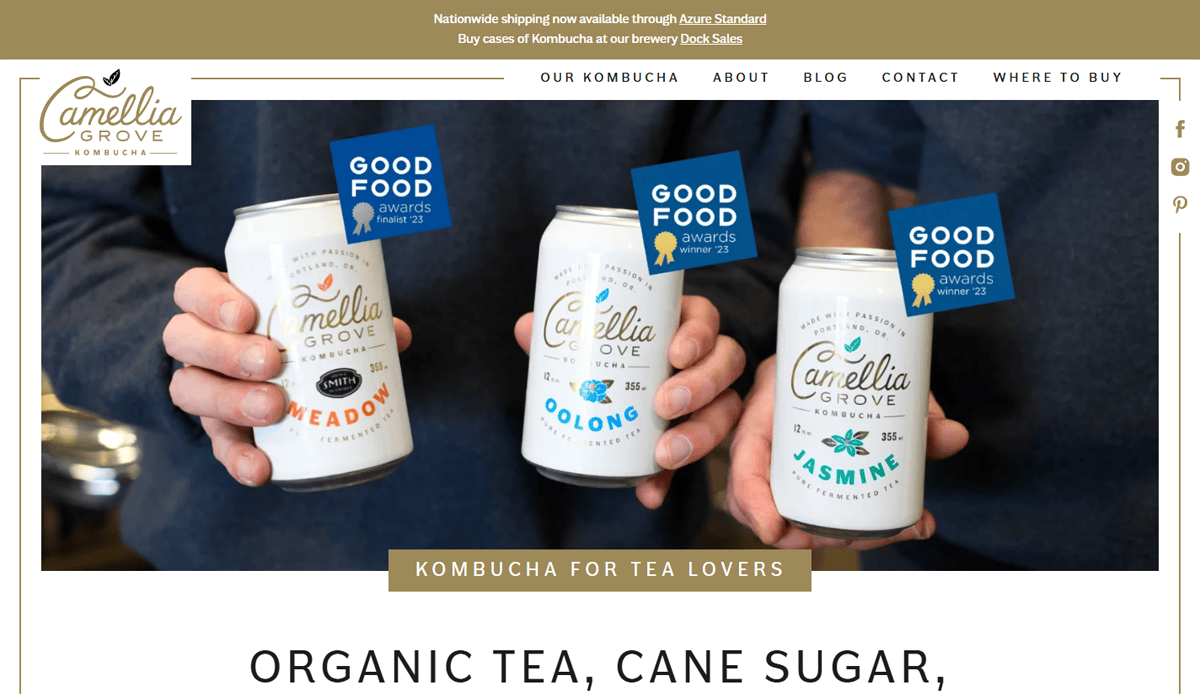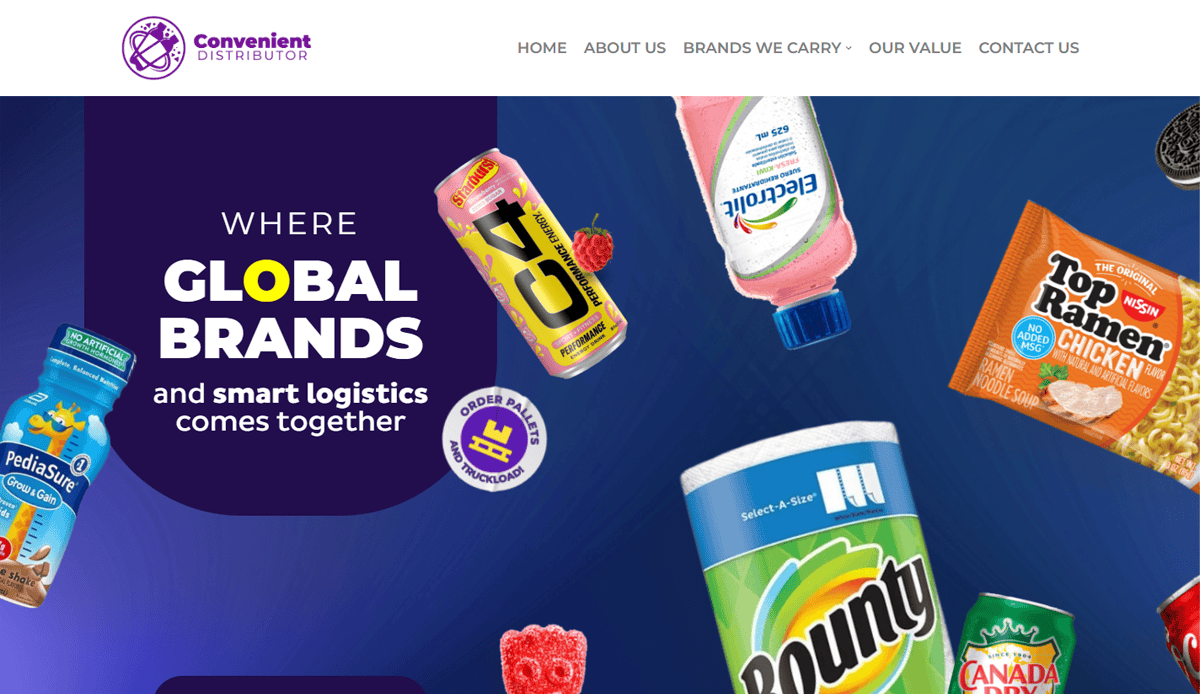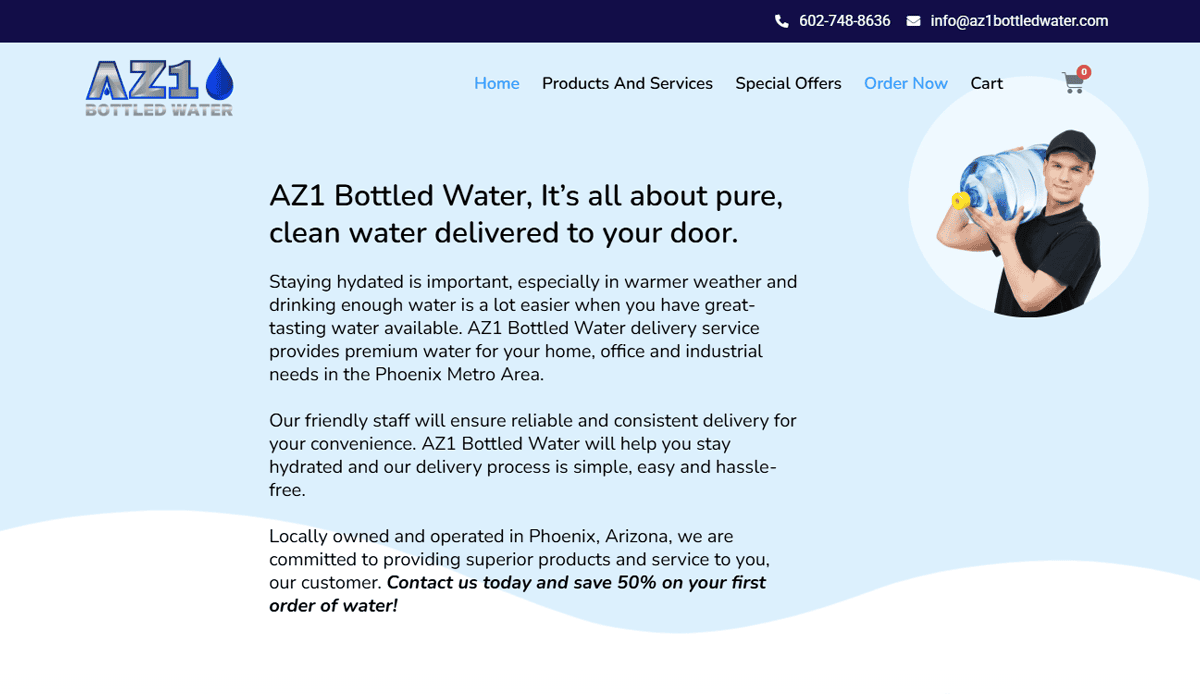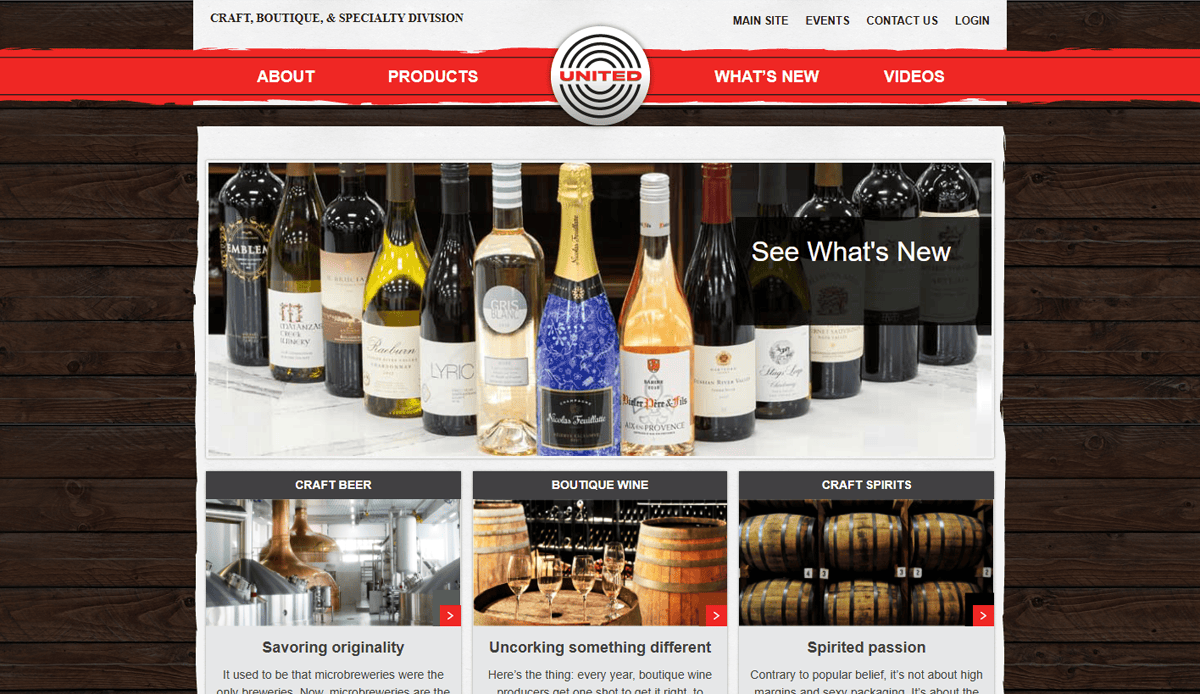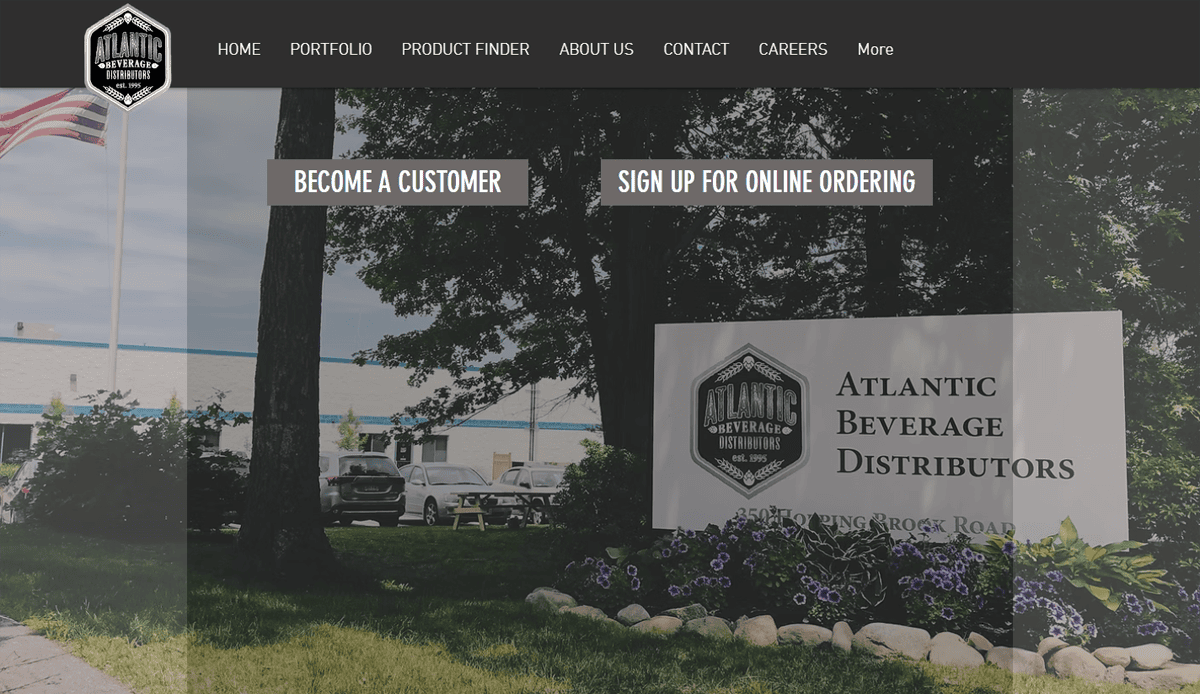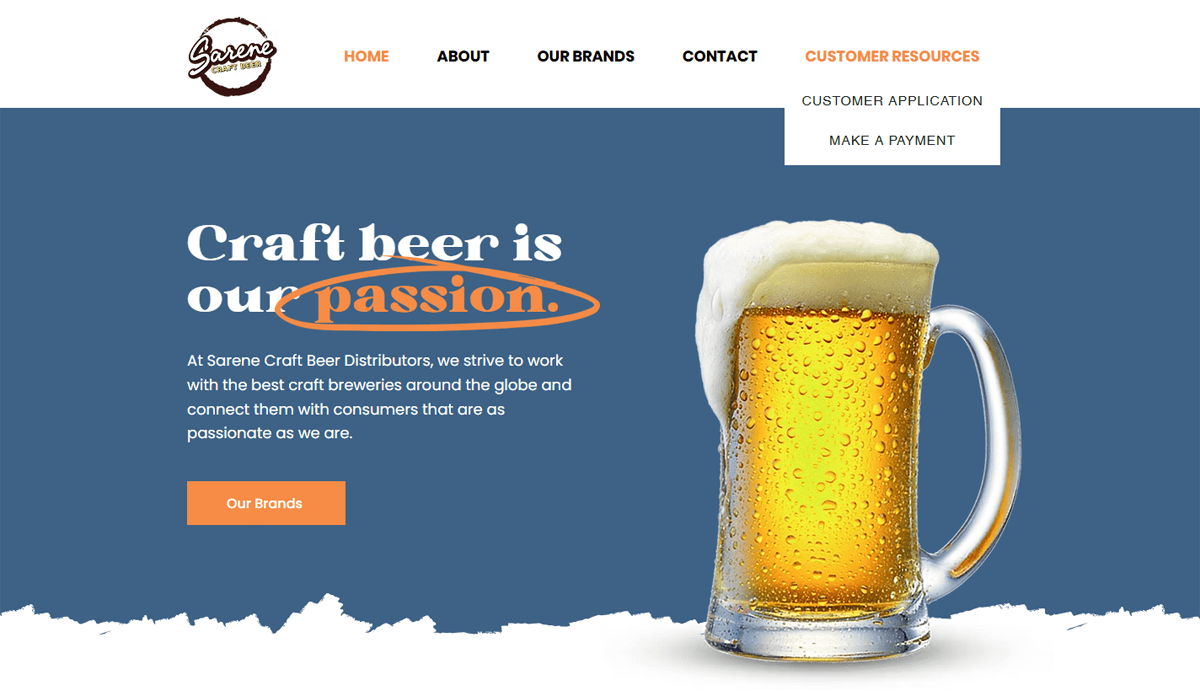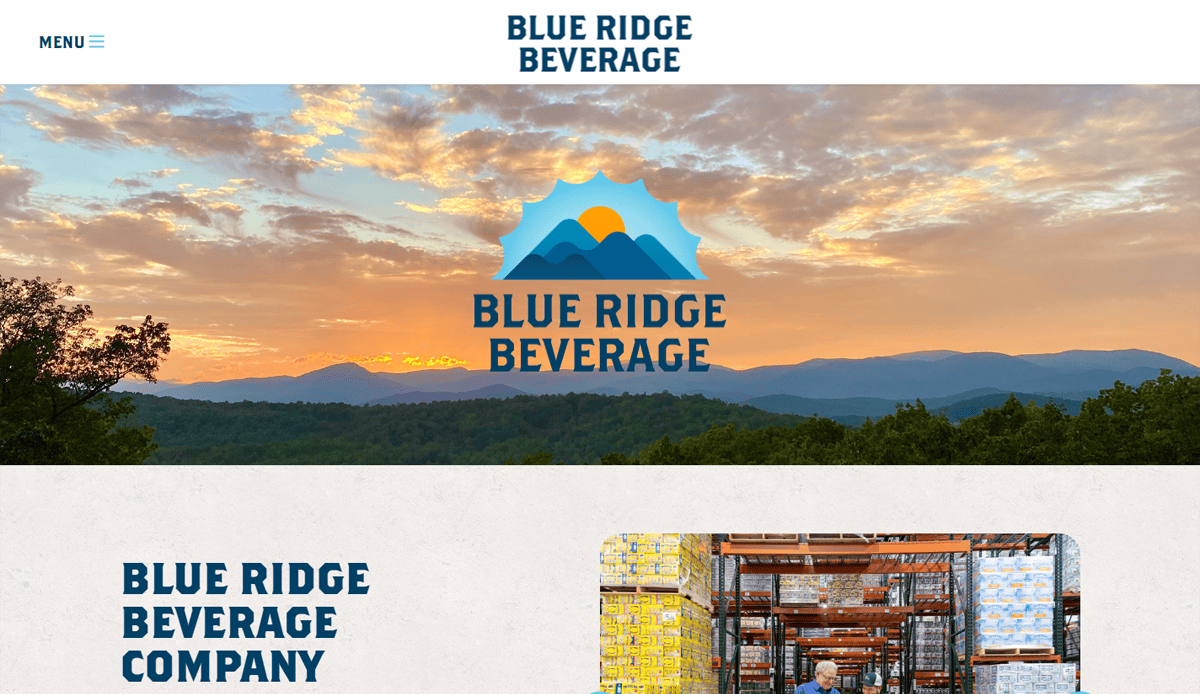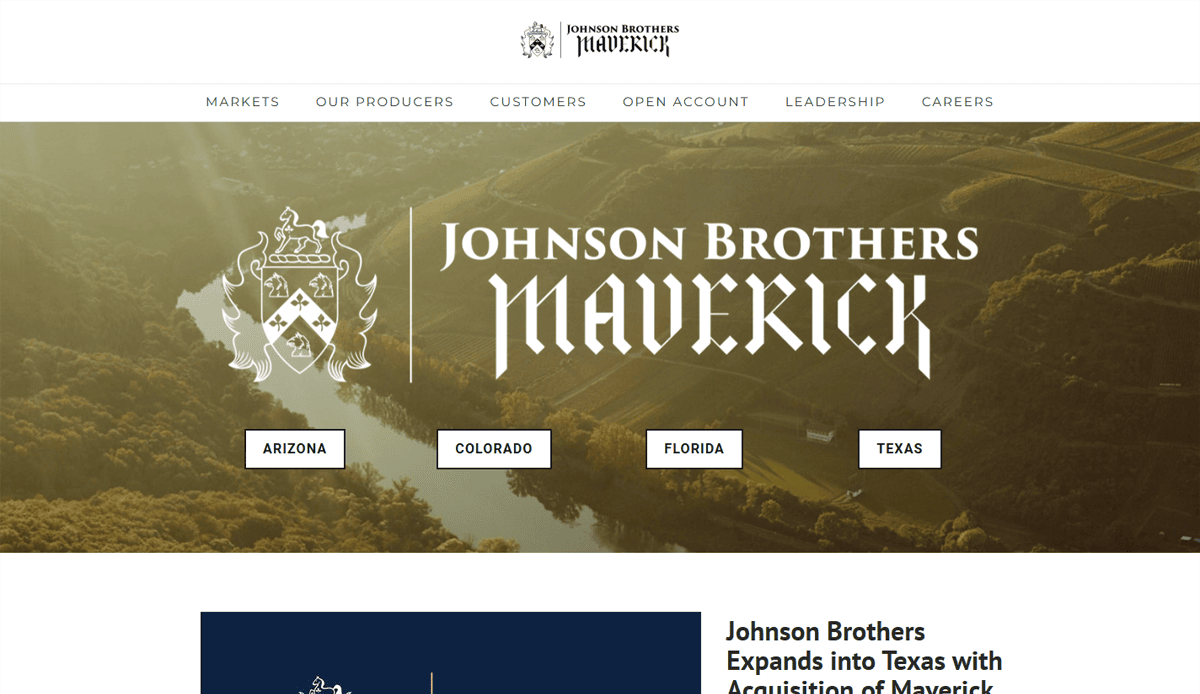Just looking for our Best Beverage Distributor Website examples list?
Key Takeaways:
- Design with appetite and trust in mind
A professional website must use high-resolution imagery and immersive storytelling to spark interest in 5‑star product pages within seconds—this builds emotional trust and drives conversions. - Mobile-first, intuitive navigation
Over 70% of users browse via mobile. Establish clean, streamlined menus, fast-loading pages, and persisted CTAs like “Order Now” or “Find Near Me” to guide quick decision-making. - Strategic SEO and structured content
Optimize product pages with detailed descriptions, nutritional data, flavor profiles, and schema-rich layout. Include recipes, blog content, and store locators to boost on‑page SEO and consumer engagement. - Capitalize on 2025 beverage industry trends
Feature functional wellness drinks, premium non‑alcoholic lines, sustainable packaging, and DTC channels. Reflect evolving consumer preferences in design and optimization strategy. - Convert with minimal friction experiences
Every page should lead the visitor to a clear next step—whether that’s e‑commerce checkout, store locator, newsletter sign‑up, or trade inquiries—removing friction from discovery to action.
Why Beverage Distributors Can’t Afford to Ignore Website Design
In the ultra-competitive beverage distribution market, your website isn’t just a digital storefront—it’s the linchpin of your growth strategy. When buyers and retailers are browsing at 2 a.m. or a distributor is comparing brands on the go, your site has one job: convert attention into action.
A great website design isn’t about flashy visuals or trends—it’s about clarity, trust, and performance. From seamless user pathways and responsive layouts to on-brand storytelling and search engine visibility, your site needs to deliver a user-friendly experience that drives measurable results.
This guide breaks down the core principles and design trends shaping the best beverage distributor websites. Whether you’re launching a new WordPress site or overhauling a legacy platform, you’ll learn what works, what converts, and what sets industry leaders apart.
Website Planning & Purpose: Building a Website That Delivers
Before a single pixel is placed or a headline written, successful websites start with a clear strategy. The planning phase defines everything that follows—structure, content, design elements, and functionality. For distributors, where margins are tight and brand reputation is everything, skipping this phase leads to confusing layouts, lost conversions, and missed optimization opportunities.
The first step is defining the core goal of the site. Are you trying to attract new retail partners? Support existing customers with ordering tools? Showcase premium products? Build brand trust among consumers? Each objective demands different site features—from ecommerce functionality to searchable catalogs or territory-based distributor lookup tools.
Next, it’s essential to audit your existing assets. Many beverage companies have fragmented digital footprints with outdated branding, disconnected content, and inconsistent user experience across devices. Use this time to align your web design with a clear message and visual identity that resonates with buyers.
Structure and information hierarchy also come into play. A strategic sitemap ensures that high-traffic content like product categories, new releases, and “where to buy” pages are prioritized. Planning the user journey to lead with an intuitive theme and logical calls to action—like “Order Now” or “Schedule a Demo”—keeps visitors engaged and moving forward.
Finally, no planning phase is complete without aligning your digital goals with business objectives. That means ensuring the site integrates with CRM tools, marketing platforms, and inventory systems. It also means building in flexibility to grow with your distribution channels.
For a deeper dive into how strong planning supports effective design, explore our breakdown of the core principles of web design.
Design Principles: What Makes a Website Stand Out
Design isn’t just about appearance—it’s about purpose. Great site design merges visual storytelling with user experience to build credibility and convert interest into action. Whether your goal is to attract wholesale buyers or promote product launches, the design principles below are non-negotiable.
Clarity and simplicity come first. A cluttered layout with too many competing messages can overwhelm visitors. Instead, use a clean design with intuitive navigation, bold headings, and strong visual hierarchy to help users find what they’re looking for quickly—whether it’s a product page, distributor portal, or a “contact us” form.
Consistent branding ensures trust. Use a defined color palette, typography, and imagery style that reflect your product line and company values. Beverage buyers make quick visual judgments—your design needs to communicate professionalism and quality at a glance.
Mobile-first responsiveness is mandatory. With a large portion of research and ordering happening on mobile devices, a responsive layout that adapts to screen sizes is critical. Every element—from image sliders to product details—must be touch-friendly and fast-loading.
High-quality visuals should be prioritized. Showcasing your beverages through sharp imagery, lifestyle product shots, and animated highlights adds value. Include photos of packaging, point-of-sale displays, and behind-the-scenes operations to build an emotional connection with your audience.
Visual cues and calls to action guide the journey. Use design to lead users toward specific actions like “Request a Quote,” “Locate Distributor,” or “Explore Flavors.” Clear buttons, directional graphics, and color contrast are powerful tools to increase engagement.
Accessibility and speed matter too. Pages must load fast, even on mobile, and adhere to basic accessibility standards for users with disabilities. It’s about inclusion, and it’s about performance, trust, and search engine visibility.
Want to understand how these concepts translate into real-world execution? Check out our step-by-step guide to the web design process for insights into how top agencies bring smart design to life.
Content & Navigation: Structuring for Clarity and Conversion
In beverage distribution, where speed and clarity influence buying decisions, the structure of your content and navigation can make or break the user experience. An effective site leads visitors from discovery to action without confusion or friction.
Start with a hierarchical content structure. Your homepage should serve as a launchpad to key sections like Products, About, Services, Distributors, and Contact. From there, each major section should lead to deeper, focused subpages. For example, “Products” can break down into categories like sparkling water, energy drinks, or non-alcoholic spirits—each with its own landing page, complete with specs, flavor profiles, and visual assets.
Sticky headers or floating nav bars help guide users without making them scroll back up to find links. Use clear, conventional labels—avoid jargon or clever terms that don’t immediately convey what’s behind each link. Simplicity wins in a B2B sales funnel.
Include search functionality and filters on product pages. Distributors often know exactly what they need. Make it easy to sort by beverage type, case size, flavor, or brand. Integrate a “Where to Buy” tool if selling DTC or helping retailers find local reps.
For content, write with purpose and structure. Use H2s and bullet points to break up information, and keep paragraphs tight and scannable. Include trust-building elements like case studies, distributor testimonials, product certifications, and key partner logos. These social proof elements should be placed near high-intent actions like contact forms or product inquiry CTAs.
Lastly, align your content strategy with user intent. Highlight your logistics capabilities, product sourcing, customer support, and innovation in packaging—topics that matter to buyers evaluating long-term supplier relationships.
For more insights into how these two nuances build conversion-ready B2B websites, read our tips on crafting effective B2B website designs.
Visual Elements: Turning Product Appeal into Digital Engagement
In this industry, visuals aren’t just decoration—they’re a sales tool. Great imagery builds trust, reinforces your brand, and enhances the visitor experience by making content more digestible and engaging. Every visual element must be intentional, from the hero images down to the iconography used on your product pages.
Start with professional product photography. Whether you distribute craft sodas, kombucha, or premium mixers, your product images must pop. Use clean, consistent lighting and show products in their packaging and in use—think drinks being poured, displayed at an event, or stocked in retail shelves. This builds a sensory connection and helps buyers envision your product in their setting.
Lifestyle visuals and contextual images add depth. Show your beverages in real-world settings—cocktail bars, corporate events, or gym vending fridges—to communicate brand personality and market placement. These elements tell a story that static product shots alone can’t deliver.
Use video to drive engagement. A 30-second explainer about sourcing practices or a tour of your bottling facility adds authenticity. Consider integrating motion graphics to highlight your distribution coverage, delivery processes, or seasonal campaigns. Embedded videos on homepage banners or product pages can boost dwell time and build credibility.
Icons and illustrations support scannability. Use them to differentiate product features (like “zero sugar” or “organic”) or represent services like “nationwide shipping” and “bulk ordering.” These visual cues enhance the overall experience and reduce cognitive load for busy buyers.
Color and typography should reflect your brand values. A wellness brand might lean on soft pastels and clean sans serifs, while an energy drink distributor might use bold reds and sharp fonts. These details shape perception within seconds and must align with your identity across all touchpoints.
When done right, visual elements support every stage of the buyer’s journey—attracting attention, reinforcing trust, and guiding users toward action. Make every pixel count.
Ongoing WordPress Maintenance: Keeping Sites Secure and High-Performing
A well-designed WordPress site is only as good as the maintenance behind it. Where product data, pricing, and availability change frequently, ongoing maintenance ensures your site stays fast, secure, and aligned with your operational needs.
Start with core updates and plugin management. WordPress regularly releases updates to improve performance and patch security vulnerabilities. Skipping these can open your site to risks and performance issues. Plugins—especially those powering ecommerce, CRM integrations, or product catalogs—must also be monitored and updated to remain compatible.
Site speed and uptime monitoring are essential. A slow-loading site drives away potential buyers and damages SERPs. Use performance tools to track load times and identify issues with image optimization, server response, or script bloat. Uptime monitoring ensures you’re alerted immediately if your site goes offline, so you can fix issues before customers notice.
Backups and security scans must be scheduled regularly. A secure site protects your product data and any customer or partner information submitted through contact or order forms. Routine malware scans, firewall implementation, and real-time threat detection protect your investment and your brand’s reputation.
Content and inventory updates should be streamlined through your CMS. Whether you’re adding new beverages, adjusting shipping regions, or launching a seasonal promotion, WordPress makes it easy to update your content quickly—especially when paired with user-friendly editing tools and custom training.
Finally, partner with a web agency like ours that offers ongoing WordPress support plans. Professional websites are not set-and-forget assets. They need continuous tuning to support SEO, adapt to market changes, and stay aligned with your growth strategy. Routine maintenance reduces technical debt, avoids unexpected downtime, and keeps your site performing like the high-value asset it’s meant to be.
Best Beverage Website Design Examples
1. Southern Glazer’s Wine & Spirits
Location: Miramar, Florida, US
Key Takeaways: Streamlined product portfolio showcase; clear nationwide reach emphasis; intuitive navigation with proprietary ordering system.
URL: https://www.southernglazers.com/
2. Reyes Beverage Group
Location: Rosemont, Illinois, US (Midwest HQ)
Key Takeaways: Strong visual branding as the largest beer distributor; clean site structure; highlights vendor partnerships and distribution scale.
URL: https://reyesbeveragegroup.com/
3. Breakthru Beverage Group
Location: White Plains, New York, US
Key Takeaways: Elegant messaging on innovation and scale; multilingual support (English/Français); clear regional market navigation.
URL: https://www.breakthrubev.com/
4. United States Beverage
Location: Chicago, Illinois, US
Key Takeaways: Focuses on international craft brands; strong narrative about quality and partnerships; high‑impact imagery of portfolio.
URL: https://www.unitedstatesbeverage.com/
5. Best Brands Incorporated
Location: Nashville, Tennessee, US
Key Takeaways: Highlights extensive selection, including THC beverages; strong section on service excellence and logistics; modern visual layout.
URL: https://bestbrandsinc.com/
6. Murphy Beverage Company, Inc.
Location: Newark, New Jersey, US
Key Takeaways: Curated fine‑wine and craft beer portfolio; team of certified sommeliers; clean corporate site structure.
URL: https://murphybeverage.com/
7. Niagara Bottling
Location: Diamond Bar, California, US
Key Takeaways: Focuses on private label offerings; large‑scale bottling operations visuals; trust‑building with facility details.
URL: https://www.niagarawater.com
8. Proximo Spirits
Location: Jersey City, New Jersey, US
Key Takeaways: Modern homepage for tequila/spirits brands; strong brand associations like Jose Cuervo; clean layout with brand storytelling.
URL: https://www.proximospirits.com
9. Power Brands Beverage Distribution
Location: Nationwide (Headquartered in the US)
Key Takeaways: Focus on getting products into stores; beginner‑friendly messaging; streamlined navigation for brand onboarding/
URL: https://www.powerbrands.us/beverage-distribution-company
10. River Barrel Distributing
Location: Seattle, Washington, US
Key Takeaways: Curated craft beer, wine, cider inventory prioritizes localized sourcing; clear brand affiliation and territory coverage on homepage; simple retailer inquiry and pricing tools.
URL: https://www.riverbarrel.com/
11. CSA Distributing
Location: Denver, Colorado, US
Key Takeaways: Strong craft and non‑alcoholic portfolio organization; clean visual branding with easy access to inventory info; state-wide coverage clearly defined.
URL: https://www.csadistributing.com/
12. Camellia Grove Kombucha
Location: Portland, Oregon, US
Key Takeaways: Wholesale inquiry form prominently displayed; sustainability-focused storytelling; organic kombucha inventory highlighted within brand’s aesthetic.
URL: https://camelliagrove-kombucha.com/
13. Convenient Distributor
Location: Miami, Florida, US
Key Takeaways: Wide beverage category coverage (juice, soft drinks, energy); simple, navigable layout for retailers; clear service regions and product listings.
URL: https://convenientdistributor.com/
14. AZ1 Bottled Water
Location: Phoenix, Arizona, US
Key Takeaways: Minimalist hydration‑focused design; user-friendly online ordering info; local service and delivery reliability clearly communicated.
URL: https://az1bottledwater.com/
15. United Distributors (U.D.I.)
Location: Smyrna, Georgia, US
Key Takeaways: Specialized craft, boutique wine and spirits portfolio; clean, professional layout with structured brand categories; localized craft focus reinforced across site.
URL: https://udigacraft.com/
16. Atlantic Beverage Distributors
Location: Holliston, Massachusetts, US
Key Takeaways: Extensive New England beverage and snack portfolio; “Product Finder” tool for easy category filtering; strong visual branding and clear regional coverage.
URL: https://www.atlanticbeveragedistributors.com/
17. Sarene Craft Beer Distributors
Location: New York City & surrounding, NY, US
Key Takeaways: Passion-led craft beer storytelling; clean imagery of portfolio and facilities; responsive navigation across multiple states.
URL: https://www.sarenecraft.com/
18. Blue Ridge Beverage Company
Location: Roanoke Valley, Virginia, US
Key Takeaways: Coverage of beer, wine & non-alcoholic beverages across 49 counties; clear facility info and service areas; traditional design but effective local trust signals.
URL: https://www.blueridgebeverage.com/
19. Maverick Beverage Company
Location: Orlando, Florida; also serving AZ, TX, MN, US
Key Takeaways: Independent fine wine & craft spirits distribution network; modern multi-market service area communications; simple yet effective CTA for partners and retailers.
URL: https://www.maverickbev.com/
Ready to Elevate Your Beverage Distributor Website?
If you’re serious about standing out in the distribution industry, your website must be more than just an online storefront—it must be a fully optimized, user-friendly website that works as hard as your team does. Whether you’re launching a new website or upgrading an outdated one, your digital presence should reflect the professionalism, trust, and innovation of your beverage business.
At our top-tier digital marketing agency, we specialize in building WordPress websites for the food and beverage industry that are both visually appealing and strategically built for ranking high in search results. From streamlined product catalogs to responsive design and targeted marketing tools, we’ll help you create a website that drives results and delivers a seamless online experience for your target audience.
Let’s build a distributor’s website that does more than look good—let’s build one that grows your business. Request a free consultation today.
Common Questions About Beverage Distribution Site Design, Answered
What are the key features of a great distribution website?
A well-designed website for a distribution business should include mobile optimization, detailed product information, intuitive navigation, and clear calls to action. Key features like inventory management tools, a searchable product catalog, and online storefront capabilities help retailers and consumers place orders seamlessly. Integrating customer reviews and adding unique features such as location-based distributor searches can further enhance user experience and trust, and credibility.
How does website design impact rankings for beverage companies?
Thoughtful design directly influences how your distribution website performs in search results. A site that is optimized for search engines with clean code, fast load speeds, mobile responsiveness, and structured product information helps improve visibility. Consistent updates and content that addresses your target audience’s questions also signal value. Our guide to core web design principles can help you prioritize the right elements.
Why is mobile optimization essential?
With decision-makers frequently browsing from phones and tablets, mobile optimization is no longer optional. A user-friendly design that adapts seamlessly to smaller screens ensures visitors can place orders, explore your product catalog, and access vital product information without frustration. A responsive, mobile-first design also supports better performance in searches.
Should a beverage distribution company consider an ecommerce website?
Yes. A modern ecommerce website enables your distribution company to process online sales directly or streamline bulk ordering for retailers. A secure, well-structured ecommerce solution supports marketing campaigns, improves online presence, and simplifies reorders for loyal customers. It also opens up opportunities to expand your reach and target new regions.
How can branding elements like logo design and color schemes support a distributor’s website?
Strong branding builds the element of trust. Your logo design, color palette, typography, and imagery should reflect your values and market positioning in the food industry. These visual cues help create a visually appealing and consistent online experience that reinforces your credibility with both retailers and end consumers.
What role does user experience play in the success of a beverage website?
User experience is central to every web development decision. A user-friendly design helps visitors navigate your site effortlessly, find the right products, and place orders without confusion. Pages should be structured to prioritize readability, quick access to product details, and smooth functionality on all devices. For more strategies, check out our step-by-step guide to the web design process.
How often should websites be updated?
Your distribution website should be kept up-to-date regularly to reflect current inventory, seasonal products, and updated pricing or shipping options. Frequent updates also allow you to align with shifting online marketing goals, showcase new design inspiration, and respond to customer feedback. Consistently fresh content signals relevance to search engines and builds ongoing engagement.
What pages are essential for a distribution company website?
At minimum, include Home, About Us, Product Catalog, Place Orders, Retailer Resources, Customer Reviews, and Contact pages. Consider adding unique features like a distributor locator, FAQs, and a blog with tips for retailers. Each page should serve a clear purpose and be optimized to drive conversions and enhance your online presence.
How can a beverage company enhance website functionality for different audiences?
Designing for both retailers and consumers means offering tools and experiences tailored to each group. Retailers need access to pricing tiers, bulk ordering, and inventory status. Consumers may value detailed flavor profiles, suggested pairings, and customer reviews. A flexible, well-designed website allows your design team to build layered functionality without complicating the experience.
Can website design help a beverage brand expand into new markets?
Absolutely. With the right online storefront and digital strategy, a beverage business can expand its footprint far beyond its initial territory. Localized content, SEO-friendly web development, and a scalable ecommerce structure all help you reach potential customers in new areas while maintaining brand consistency. Strong visual design and thoughtful user flows position your brand as a leading distributor in any region.

